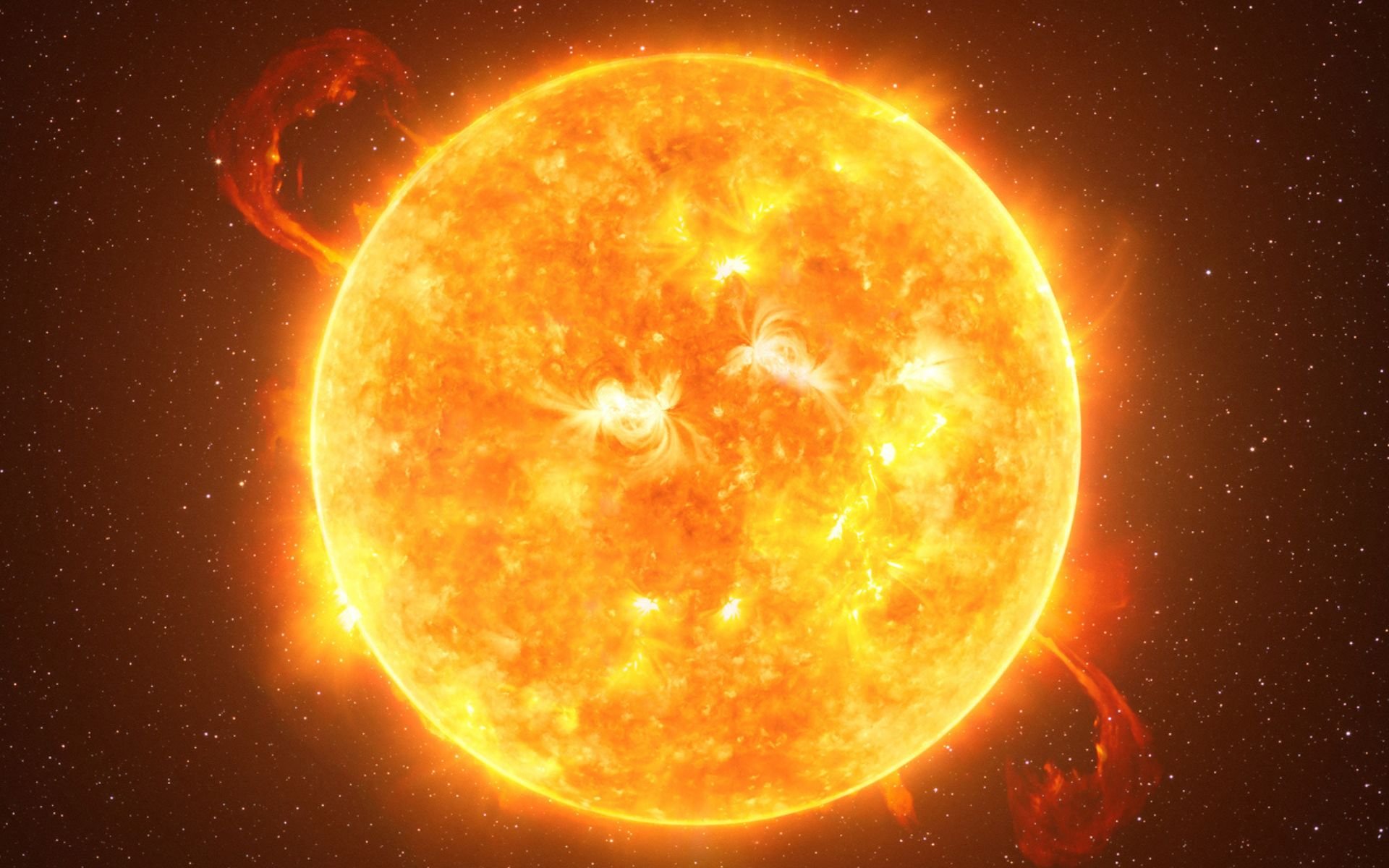The Sun is the largest star in the Solar System and one of the main stars responsible for the emergence of life on Earth as we know it is possible; It is a medium-sized cosmic object, and it is not uncommon to find stars 100 times more massive.
The solar structure is approximately 1.3 million kilometers in diameter and reaches temperatures of up to 15 million degrees Celsius at its core. It is a unique structure in the Solar System, but it also has great similarities with other stars detected in the observable universe.
It may be considered different because it is surrounded by planets, asteroids, comets and other celestial bodies, but it is not much different from some of the stars in the Milky Way and the rest of the universe.
“The Sun is a star around which the Earth and other components of the solar system revolve. It is the dominant body of the system, accounting for more than 99 percent of its total mass. The Sun is the source of enormous amounts of energy, and some of this energy provides Earth with the light and heat necessary to sustain life.
There are some important differences between stars and suns. After all, every Sun is a star, but are all stars solar structures? To explain the subject a little more, we have brought together information compiled by scientists and other experts in the field.
Not every star is the Sun
Most planets and exoplanets detected using space telescopes are located in regions of their host stars. Just as the Sun is responsible for the Earth’s orbit, other celestial bodies ‘work’ with the stars in their systems. But this is not exactly a rule for describing the properties of a stellar object.
“We can always look at a particular star and say: ‘There’s no planet detected around it, but you know, maybe there’s a planet that’s a little bit small and actually orbits away from the star and doesn’t go by the star and so be a little sneaky.’ “That’s always a possibility,” Jonathan Lunine, chair of the Department of Astronomy at Cornell University, said in a study on the subject. “But more likely, there are stars without planets around them.”
To answer this question faster: No, not every star is a sun. When modern astronomy began to learn more about the structure of the sun, scientists realized that the Sun was in the star category.
Reality Only Earth’s Sun is the ‘true’ Sun, but the scientific community has decided to name similar objects the same.. Based on this, other stars detected in different systems have been classified as ‘sun’, but this does not mean that people can call any stellar body as the Sun.
In both cases, a star is classified as a Sun only when two features are detected: If they orbit planets like Earth and continue the process of nuclear fusion in their internal structures. That is, all other stellar bodies that do not have the necessary characteristics to fall into the solar category are simply called stars.
A good example of the type of stars that cannot be considered suns are brown dwarfs; because they are not large enough to initiate the process of the Sun becoming the Sun. Fusion dense nuclear. It shows that stars that host only gaseous planets also have a lower chance of being classified as Suns.
Red dwarfs are considered stellar bodies and orbiting planets that are more Earth-like, but they do not have the characteristics of ‘suns’; The same way of thinking is used to classify white dwarfs. In other words, for now every Sun is a star, but not every star is a Sun; This is controlled confusion.
It is important to emphasize that although some stars have been cataloged as ‘suns’, there is no formal agreement to define this. So, if you define a red dwarf as the Sun, you would definitely not be wrong, but you would definitely not be right either. Therefore, use the sun concept with caution.
Did you like the content? So, stay up to date with all your astronomy-related curiosities on TecMundo. If you wish, take the opportunity to understand how scientists discovered the smallest star ever detected.
Source: Tec Mundo
I’m Blaine Morgan, an experienced journalist and writer with over 8 years of experience in the tech industry. My expertise lies in writing about technology news and trends, covering everything from cutting-edge gadgets to emerging software developments. I’ve written for several leading publications including Gadget Onus where I am an author.











